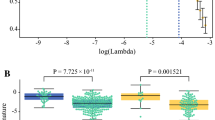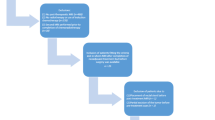Abstract
Objectives
Our primary objective was to evaluate diagnostic performance of gadofosveset T1-weighted magnetic resonance imaging (T1W MRI) for discriminating between ypT0–2 and ypT3–4 tumours after chemoradiation therapy (CRT) for rectal cancer compared with T2W MRI for a general and expert reader. Second objectives included assessing the value of multiplanar reformatting (MPR) and interobserver agreement.
Methods
A general and expert reader evaluated 49 patients for likelihood of ypT0–2 tumour after CRT on T2W, gadofosveset T1W MRI, and gadofosveset T1W MRI + T2W MRI. The general reader scored with and without MPR. Confidence level scores were used to construct receiver-operating characteristic (ROC) curves. Area under the curve (AUC) values and diagnostic parameters were calculated and compared.
Results
Gadofosveset T1W MRI + T2W MRI showed slightly superior sensitivity than T2W MRI for the general but not the expert reader. Specificity was higher for the expert on gadofosveset T1W MRI only compared with T2W MRI only (100 % vs. 82 %). MPR did not increase diagnostic performance. Interobserver agreement was highest for the combination of gadofosveset-enhanced T1W imaging plus T2W MRI.
Conclusions
The sole use or addition of gadofosveset-enhanced T1W MRI to T2W MRI did not increase significantly diagnostic performance for assessing ypT0–2 tumours. Adding gadofosveset-enhanced T1W MRI slightly increased sensitivity for the general reader and specificity for the expert reader, but this increase was not significant for more accurate clinical decision making. MPR did not improve diagnostic performance.
Key Points
• ycT restaging with MRI in rectal cancer is challenging.
• Gadofosveset-enhanced T1W MRI has shown promise for nodal restaging.
• Gadofosveset-enhanced T1W MRI did not significantly increase diagnostic performance for assessing ypT0–2-tumours.
• Addition of the gadofosveset sequence to T2W MRI slightly increased sensitivity for the general reader.
• MPR did not improve diagnostic performance of ycT staging.




Similar content being viewed by others
References
Kapiteijn E, Marijnen CA, Nagtegaal ID et al (2001) Preoperative radiotherapy combined with total mesorectal excision for resectable rectal cancer. N Engl J Med 345:638–646
Maas M, Nelemans PJ, Valentini V et al (2010) Long-term outcome in patients with a pathological complete response after chemoradiation for rectal cancer: a pooled analysis of individual patient data. Lancet Oncol 11:835–844
Habr-Gama A, Perez RO, Proscurshim I et al (2006) Patterns of failure and survival for nonoperative treatment of stage c0 distal rectal cancer following neoadjuvant chemoradiation therapy. J Gastrointest Surg 10:1319–1328, discussion 1328-1319
Lezoche G, Baldarelli M, Guerrieri M et al (2008) A prospective randomized study with a 5-year minimum follow-up evaluation of transanal endoscopic microsurgery versus laparoscopic total mesorectal excision after neoadjuvant therapy. Surg Endosc 22:352–358
Maas M, Beets-Tan RG, Lambregts DM et al (2011) Wait-and-see policy for clinical complete responders after chemoradiation for rectal cancer. J Clin Oncol 29:4633–4640
Janssen MH, Ollers MC, Riedl RG et al (2010) Accurate prediction of pathological rectal tumor response after two weeks of preoperative radiochemotherapy using (18)F-fluorodeoxyglucose-positron emission tomography-computed tomography imaging. Int J Radiat Oncol Biol Phys 77:392–399
Lambregts DM, Vandecaveye V, Barbaro B et al (2011) Diffusion-weighted MRI for selection of complete responders after chemoradiation for locally advanced rectal cancer: a multicenter study. Ann Surg Oncol 18:2224–2231
Kim SH, Lee JM, Hong SH et al (2009) Locally advanced rectal cancer: added value of diffusion-weighted MR imaging in the evaluation of tumor response to neoadjuvant chemo- and radiation therapy. Radiology 253:116–125
Kim JW, Kim HC, Park JW et al (2013) Predictive value of (18)FDG PET-CT for tumour response in patients with locally advanced rectal cancer treated by preoperative chemoradiotherapy. Int J Color Dis 28:1217–1224
van der Paardt MP, Zagers MB, Beets-Tan RG et al (2013) Patients who undergo preoperative chemoradiotherapy for locally advanced rectal cancer restaged by using diagnostic MR imaging: a systematic review and meta-analysis. Radiology 269:101–112
Suppiah A, Hunter IA, Cowley J et al (2009) Magnetic resonance imaging accuracy in assessing tumour down-staging following chemoradiation in rectal cancer. Color Dis 11:249–253
Barbaro B, Fiorucci C, Tebala C et al (2009) Locally advanced rectal cancer: MR imaging in prediction of response after preoperative chemotherapy and radiation therapy. Radiology 250:730–739
Dresen RC, Beets GL, Rutten HJ et al (2009) Locally advanced rectal cancer: MR imaging for restaging after neoadjuvant radiation therapy with concomitant chemotherapy. Part I. Are we able to predict tumor confined to the rectal wall? Radiology 252:71–80
Allen SD, Padhani AR, Dzik-Jurasz AS et al (2007) Rectal carcinoma: MRI with histologic correlation before and after chemoradiation therapy. AJR Am J Roentgenol 188:442–451
Kim DJ, Kim JH, Lim JS et al (2010) Restaging of rectal cancer with MR imaging after concurrent chemotherapy and radiation therapy. Radiographics 30:503–516
Quaia E, Ulcigrai V, Coss M et al (2011) Spectral presaturation inversion recovery MR imaging sequence after gadolinium injection to differentiate fibrotic scar tissue and neoplastic strands in the mesorectal fat in patients undergoing restaging of rectal carcinoma after neoadjuvant chemo- and radiation therapy. Acad Radiol 18:1365–1375
Heijnen LA, Lambregts DM, Martens MH et al (2014) Performance of gadofosveset-enhanced MRI for staging rectal cancer nodes: can the initial promising results be reproduced? Eur Radiol 24:371–379
Lambregts DM, Beets GL, Maas M et al (2011) Accuracy of gadofosveset-enhanced MRI for nodal staging and restaging in rectal cancer. Ann Surg 253:539–545
Lambregts D, Heijnen L, Maas M et al (2013) Gadofosveset-enhanced MRI for the assessment of rectal cancer lymph nodes: predictive criteria. Abdom Imaging 38:720–727
Lahaye M, Beets G, Engelen S et al (2009) Gadofosveset Trisodium (Vasovist®) enhanced MR lymph node detection: initial observations. Open Magn Reson J 2:1–5
DeLong E, DeLong D, Clarke-Pearson D (1988) Comparing the areas under two or more correlated receiver operating characteristic curves: a nonparametric approach. Biometrics 44:837–845
Vliegen RF, Beets GL, von Meyenfeldt MF et al (2005) Rectal cancer: MR imaging in local staging—is gadolinium-based contrast material helpful? Radiology 234:179–188
Jao SY, Yang BY, Weng HH et al (2010) Evaluation of gadolinium-enhanced T1-weighted magnetic resonance imaging in the preoperative assessment of local staging in rectal cancer. Color Dis 12:1139–1148
Beets-Tan RG, Lambregts DM, Maas M et al (2013) Magnetic resonance imaging for the clinical management of rectal cancer patients: recommendations from the 2012 European Society of Gastrointestinal and Abdominal Radiology (ESGAR) consensus meeting. Eur Radiol 23:2522–2531
Kuo LJ, Chern MC, Tsou MH et al (2005) Interpretation of magnetic resonance imaging for locally advanced rectal carcinoma after preoperative chemoradiation therapy. Dis Colon Rectum 48:23–28
Acknowledgements
The scientific guarantor of this publication is Prof. Dr. RGH Beets-Tan. The authors of this manuscript declare no relationships with any companies, whose products or services may be related to the subject matter of the article. The authors state that this work has not received any funding. No complex statistical methods were necessary for this paper. Institutional Review Board approval was obtained. Written informed consent was obtained from all patients. Some study participants or cohorts have been previously reported in the Annals of Surgery: Lambregts DM, Beets GL, Maas M et al. [18] Accuracy of gadofosveset-enhanced MRI for nodal staging and restaging in rectal cancer. Ann Surg 253:539–545. Methodology: retrospective, diagnostic or prognostic study, performed at one institution.
Author information
Authors and Affiliations
Corresponding author
Rights and permissions
About this article
Cite this article
Heijnen, L.A., Maas, M., Lahaye, M.J. et al. Value of gadofosveset-enhanced MRI and multiplanar reformatting for selecting good responders after chemoradiation for rectal cancer. Eur Radiol 24, 1845–1852 (2014). https://doi.org/10.1007/s00330-014-3231-9
Received:
Revised:
Accepted:
Published:
Issue Date:
DOI: https://doi.org/10.1007/s00330-014-3231-9




